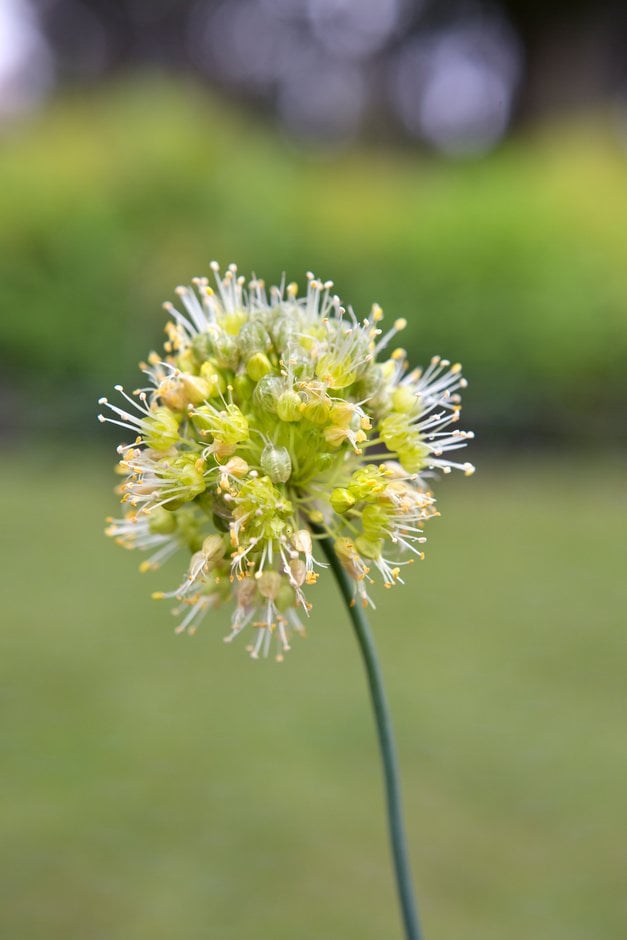Allium obliquum
lopsided onion
Bulbous perennial about 1m tall, with short rhizomes and narrow, stem-clasping, blue-green leaves. Pale yellow-green, ball-shaped flowers are about 2.5cm across and appear in mid-summer on twisty stems; suited to wet soils
Size
Ultimate height
0.5–1 metresTime to ultimate height
1–2 yearsUltimate spread
0–0.1 metreGrowing conditions
Moisture
Moist but well–drainedpH
Acid, Alkaline, NeutralColour & scent
| Stem | Flower | Foliage | Fruit | |
| Spring | Green | |||
|---|---|---|---|---|
| Summer | Yellow | Green | ||
| Autumn | ||||
| Winter |
Position
- Full sun
Aspect
South–facing or West–facing
Exposure
Sheltered Hardiness
H4Botanical details
- Family
- Amaryllidaceae
- Native to GB / Ireland
- No
- Foliage
- Deciduous
- Habit
- Clump forming
- Genus
Allium are bulbous herbaceous perennials with a strong onion or garlic scent, linear, strap-shaped or cylindrical basal leaves and star-shaped or bell-shaped flowers in an umbel on a leafless stem
- Name status
Correct
- Plant range
- Central Romania to Mongolia
How to grow
Cultivation
Grow in fertile soil that is not too dry, in full sun. Suitable for wet soils. Plant bulbs 5-10cm deep in autumn. See allium cultivation for more information
Propagation
Propagate by seed when just ripe or in spring; or propagate by offsets which can be carefully detached by lifting the bulb after flowering has finished. See bulb propagation
Suggested planting locations and garden types
- Cottage and informal garden
- Gravel garden
- City and courtyard gardens
- Patio and container plants
- Wildlife gardens
- Cut flowers
- Flower borders and beds
Pruning
No pruning required, other than to remove old flowered stems and foliage
Pests
May be susceptible to allium leaf miner and onion fly
Diseases
May be susceptible to onion white rot and onion downy mildew
Love gardening
Sign up to receive regular gardening tips, inspiration, offers and more
View our Privacy Policy
Get involved
The Royal Horticultural Society is the UK’s leading gardening charity. We aim to enrich everyone’s life through plants, and make the UK a greener and more beautiful place.
